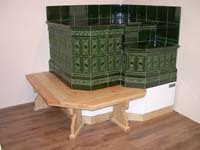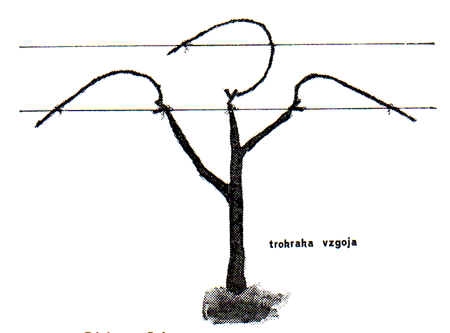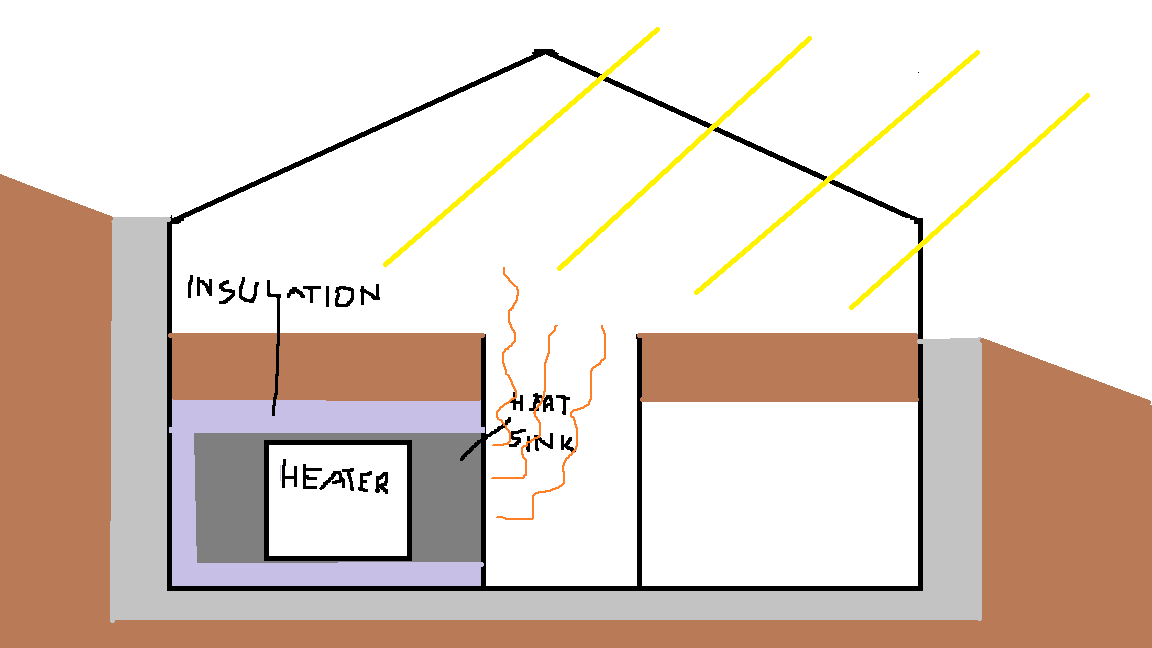Yes Garry,
For me, December, January and February is out of the question, No need to even try.
Nothing high tech here, you’ve probably seen it before. Someone brought one to Argos last year, and it was simple, and impressive heat maker. It might keep your veggies alive on the coldest night of the year. 2 parts to watch
Thanks guys, for all the ideas!
Don,
policarbonate or glass, maybee eaven foil. Will see what the resources give.
Koen, good idea, but automated? Have you got something specific in mind?
The only continous charcoal maker l know about is Dons cone kiln. Perhaps this culd be modified to run on chunks or thin firewood…
Jan,
perhaps you are right. But how huge you think we are talking about?
The thing is l want the sistem to be able to run unnatended for at least 24 hours, 48 wuld be preffered.
We have a massive brick fireplace looking like this in our house

We fire it up now and then just for that nostalgic feeling, and it stays warm for about 2 days. But its hard to meter how hot it gets… Thats why l first went the water/thermostate route.
Garry,
your black water wall idea has a check for a must install. Thanks on a good idea!
As for winegrape, we cut winegrape in january to a lengh of the original steamp like this

New shoots then sprout out each year, about 15/plent about 2m long, so plenty of partial shade and clear in the winter.
Snow might be a problem thugh… Still need to do something about that…
Carl, good concept, i did see it before, but sawdust is wery expensive here. 6m3 about 60eur (we buy it for horse bedding)
Firewood is free thugh 
The idea of Troy can be an interesting option
I was inspired by this design for my charcoal furnace, I would like to automate its loading to run continuously
Here is a nother idea
Puting Jan Olas idea in to a count, keep it simple, while utilize the grounds natural heating capability.
Its a raised bed style greenhouse, dug in to the ground. A intermediate space is likely a good idea, to trap the cold winter air at entrance to the greenhouse (a coworker named it the Dreamhouse  like that name)
like that name)
Ha l missed that post! Good idea. Hope it works!
Hello KristijanL
Under the floor, yes.
With the chimney passage ways UP the back dug in retainer wall. Give you the pulling Up drafting. Safety; always drafting when cooling off, unattneded. Air and flow only controlled by the air tight capable fuel entry doors. Never a chimney “dampner”! That is an open fire place, non -airtight stove control “fix”. A sooner-or-later CO killer.
A combo of the old Roman baths system and the Russian/Siberian horizontal bed-stoves.
Practice. Patience. Persistence.
Steve Unruh
I quickly read through this topic and didn’t see any reference to the advantages of extra CO2 for plants. I am considering the use of a TLUD as Koen suggested because of this extra CO2 advantage. I think a TLUD can be made quite tall for longer burn time.
Steve,
l agree 100%. Ofcorse, a wood burner without a vertical chimeny wuld end up sadly (unless a fan is used, but you presented obvious CO and smoke threat).
l just havent decided yet rather to put a chimeny vertical part (not shown in the drawings) in side the greenhouse or out. Outside is easyer to do, but l wuld loose lots of heat trugh radiation of the chimeny…
We had a Siberian stove as you describe above when l was young. Man those are great. Our was filled with sand, but only stayed warm for about half a day. l think clay and concrete might be a better idea in terms of heat accumulation.
Bruce,
what do you mean with higher CO2 concentrations useing a TLUD?
A TLUD used inside a greenhouse without a chimney produces heat and CO2. Both make plants grow better.
I am working and thinking on an extended season greenhouse/ sun space as well. Watching and thinking.
Mine is attached to the house. It is a used solaraim. Aluminum with curved 3/4" thermal pain glass. I used 2" extruded polystyrene insulation vertically around the perimeter to 3’ below grade. I also used2" horizontal to 32". 1 ’ below grade. At this time I have only an open door from the house for heat. I have been using it since early March in northern Wisconsin. I have been eating salad greens for a few weeks now.
The room in a room is a must to store heat . I think hydronicly heated beds with low tunnels are the way to go. I have been collecting free used bricks to add mass. I also plan to add fans to pump excess heat in the house.( I have saved on the wood immensely already this spring without a fan. ) I also plan to duct it below the floor when not needed in bed the house. I plan to put large hot bc water storage tanks below the floor that can be heated with solar, wood , compost or eventually waist engine heat from a generator.
I have also been reading up on aquaponics. Another large volume of thermal mass. I am hoping the ground will regulate this water temp to mid 50’s to raise trout and greens. The water can also be tempered by adding fresh water and watering the garden with with fish tank water.
Lots of ideas less time and no money. Good things take time.
How do you ensure that the co2 rate has not been harmful to your health?
Greenhouse CO2/humidity/temp meters or safety CO2 level meters are available for around $100 and up.
“Lots of ideas less time and no money. Good things take time.”
Story of my life. Specialy the no money part 
Interasting concept thugh. It was allways my dream to have a winter garden connected to the house. Well, actualy more like a tropical living room. Imagine sitting on a comfy chair with lemons, oranges, cinnamon, cardamom, ginger and other exotics thriveing around you while there is a foot of snow a few steps further. Priceless. I have been to one like this, l fell in love. But the current house unfortunaly doesent allow it… Perhaps some day.
Some interasting numbers. If one culd burry and insulate a 70m3 container somewhere, one wuld never need any aditional heating. 70m3 of water culd be heated in the summer by solar heaters and accumulate enough energy to provide a constant 2kw heating value. But thats a big container. And l have no idea how to insulate such a quantity of water.
Anny ideas?
I don’t know much but I do know the heat lose is tremendous. With no heat I had temps in the -30’s f. It is a great season extender on both ends and a big help on home heating for a few months on both ends. Unfortunately we don’t get any sunshine from the end of December till the end of February. If you could keep it warm enough the best you could do is sustain life, no growth. Artificial lights will produce lots of heat but if one is going to use them may bc as well do it in the house where the heat is also enjoyed by you and replaced heat from another source. Heat ad light for one money.
The University of Minnesota is working with growers on designs for Deep Winter Greenhouses.
The information and plans can be found here http://www.extension.umn.edu/rsdp/statewide/deep-winter-greenhouse/
These greenhouses have been able to grow stuff all winter long without added lights and little or no added heat. We had one of the guys out to do a presentation. They currently have 5 greenhouses they are monitoring for performance and heating requirements. They opted for electric heat for ease of measurement but it sounds like it is rarely needed. Some limited electric required to runs fans to store the heat in rocks under the greenhouse. They pay very close attention to sealing up any air leaks and have lots of insulation.
Hmm interasting. This concept looks like a more efficiant one (less of the surface is exposed glass or foil so less heatloss) and cheaper.
Ideas are sprouting with each post so keep them comeing guys, thanks!
Wouldn’t there be a risk in an enclosed space that a TLUD could use up enough oxygen to become a CO generator?
Here’s an article on eutectic salts, and greenhouse approaches for cold climates.
http://smallfarmcanada.ca/2016/chill-out-storing-heat-inside-a-greenhouse-using-salt/
I feel that no matter how good the setup, the heat losses from the glazing on a greenhouse will meet a point of impracticality in extreme cold, the R-value / U-value of even the best windows is just too low. Also, the extra insulative value is only gained with great added cost.
I think in extreme climate, a solarium / 3 season greenhouse attached to a heated building is probably optimal. Insulated shutters will be the only other way to reduce heat losses.


